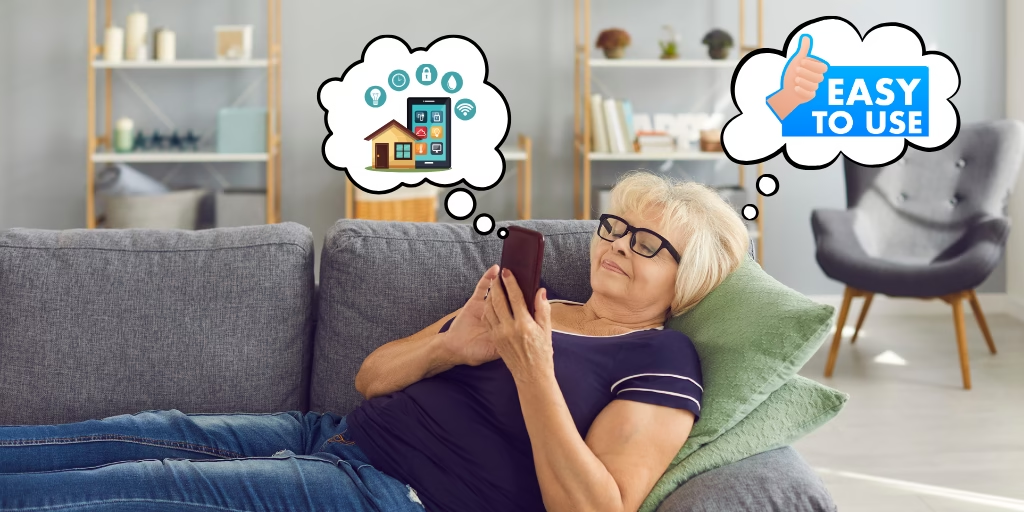Dummies Guide To Smart Homes
Smart homes aren’t just for tech experts or futuristic films, they’re for anyone who wants to make everyday life a little easier. Whether it’s turning on a light with your phone or getting an alert when someone’s at the door, smart home technology is surprisingly simple.
What Is a Smart Home
A smart home is just a regular home with some devices that can be controlled remotely or automatically. That might mean using your phone, your voice (e.g., with Alexa or Google Assistant), or letting devices trigger each other.
You can start with just one device and add more devices as your confidence grows.
What Kind of Smart Devices Are There
Most smart devices fall into one of these categories:
1. Smart Devices That Turn Things On or Off
These control power or switches.
- Smart plugs (turn appliances on / off)
- Smart light bulbs (switch lights on / off)
- Smart switches (like a regular light switch, but can also be controlled remotely)
2. Smart Devices That Sense Things
These detect changes around your home.
- Motion sensors (detect movement)
- Door / window sensors (know if something’s open or shut)
- Temperature or humidity sensors
3. Smart Devices That Open or Close
These physically move things.
- Smart blinds or smart curtain openers \ closers
- Smart locks (for doors or gates)
- Smart garage doors
4. Smart Devices That Provide Data
These give you information. Examples:
- Thermometers
- Air quality monitors
- Smart energy meters
- Security cameras (video and alerts)
How Do Smart Devices Connect
There are two main ways in which smart devices connect up to make a smart home.
Direct Connection
Some smart devices connect directly to your phone or tablet via:
- Bluetooth – Bluetooth devices a very common wireless standard that is often used e.g. for connecting headphones to phone. This same method of connection is used by smart home devices.
- Wi-Fi – Smart devices that use WiFi, connect directly to your home WiFi \ internet router. This gives WiFi smart devices access to the internet, allowing them to be controlled remotely.
Using a Hub or Smart System
A smart hub is like a central brain that connects lots of smart devices in one place. It allows for automations and is best for smart homes that have more than 1 or 2 smart devices
Popular smart hubs / smart systems include:
- Amazon Alexa
- Google Home
- Aquara
- Philips
- Home Assistant
……………..and many more
Do I Need the Internet
- Some devices don’t require internet e.g. Bluetooth devices connected directly to a smartphone or tablet.
- Others need the internet to function (like cloud based cameras, voice assistants, or anything you want to control when you’re away from home).
How Hard Is It to Set Up a Smart Device
It’s easier than you think. Here’s the typical setup:
- Plug in or power the smart device
- Put it into pairing mode (usually by holding a button) or scanning a QR code printed on the device
- Open the smart app on your phone (e.g., Smart Life, Alexa, or Google Home)
- Follow a couple of step to connect the device to your smart home
That’s it. Most apps walk you through it step by step.
What About Automations
Once you have more than one device, you can create automations like:
- “If motion is detected, turn on the hallway light”
- “When I leave home, turn off all lights”
- “At sunset, close the blinds and turn on a lamp”
These can be set up easily in your smart home app
Getting Started: The Easiest First Smart Devices
If you’re not sure where to begin, try one of these:
- Smart plug – great for making normal lamps, kettles, or fans smart
- Smart bulb – start with a single bulb you can control from your phone
- Motion sensor + light – get a light to come on when you walk into a room
Smart homes don’t have to be complicated or expensive. Start small. You can always add more later. If you can use a phone app, you can set up a smart home.
No electrician, No wiring, No fuss……simple





